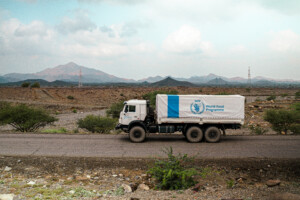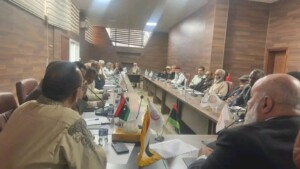Sudan OCHA bulletin 27: 137 dengue fever cases reported across Sudan
According to the World Health Organization (WHO), the Federal Ministry of Health (FMoH) in Sudan has recently reported an increase in the number of suspected dengue fever cases during the period 2 October to 8 December 2017.
According to the World Health Organization (WHO), the Federal Ministry of Health (FMoH) in Sudan has recently reported an increase in the number of suspected dengue fever cases during the period 2 October to 8 December 2017.
The UN Office for the Coordination of Humanitarian Affairs (OCHA) reports in its latest biweekly humanitarian bulletin that a total of 137 suspected cases, including three deaths, were reported from Khartoum, Kassala, East and West Darfur, South Kordofan, Red Sea, River Nile and Gezira states over this period. The highest number of cases (118 suspected cases with no associated deaths) was reported in Kassala, likely related to strong case detection and management capacity by the State Ministry of Health (SMoH). Out of 49 blood samples taken from Kassala and Khartoum, 40 tested positive for Dengue (39 from Kassala, 1 from Khartoum).
In response, FMoH, SMoH and WHO activated the response plan, including by distributing mosquito repellents to 10,000 school children in Kassala and volunteers, and visiting 2,500 houses to raise awareness about indoor vector control activities. In order to contain the current suspected outbreak in the country, the FMoH has actively worked to strengthen surveillance for early detection of suspected cases as well as strengthen entomological surveillance and vector control measures. Additionally, partners have agreed on standardized case definition and the distribution of guidelines and protocols. Risk communication should play a major role in the community to increase awareness about protective measures needed to reduce exposure to mosquito bites.
The last outbreak of dengue fever in Sudan was reported in 2014 in Red Sea State, with 738 cases reported, including six associated deaths. Red Sea State has been affected by dengue fever since 2003. The worst outbreak in Sudan, so far, was in 2010, with 4,008 cases and 12 deaths reported, according to the WHO’s most recent Epidemiological Monitor.
Dengue fever is transmitted through the bite of infected the female Aedes aegypti mosquito, the same species that transmits yellow fever. With similar symptoms to malaria, such as febrile conditions, and head ache, characteristic of dengue fever is a skin rash and lethargy. Generally lasting seven days, it manifests after a 14-day incubation period after the mosquito bite. It affects infants, young children and adults, and seldom causes death, but may evolve in a small sample of cases to a life-threatening hemorrhagic fever. Recovery from infection provides lifelong immunity against the virus.
Nearly 1,500 Sudanese refugees set to return to South Darfur from Central African Republic
Over a decade since taking refuge in the Central African Republic, nearly 1,500 Sudanese refugees are voluntarily returning to their home area in El Radom locality’s Dafag town, in South Darfur State, according to a press release by the United Nations Refugee Agency (UNHCR).
More than 460 returnees have been flown in from the Central African Republic to the South Darfur state capital Nyala since 12 December. Initially hosted in a transit centre in Nyala, returnees then travelled to their village, located 350km away.
Nearly 3,500 people who left from South Darfur to CentralAfrican Republic in 2007, fleeing conflict, were hosted across the border at Pladama Ouaka camp. In November, encouraged by improved security conditions 1,500 refugees decided to voluntarily return to Sudan, following a visit to the camp by UNHCR and Government of Sudan representatives, and after an assessment of an area of return.
To help re-establish homes and livelihoods, returnees will be provided with access to land, in addition to return packages. UNHCR will also work with government authorities and other partners to enhance service provision in the return area.
Darfur has witnessed a growing trend of refugees and internally displaced persons (IDPs) returning spontaneously in the last few years, according to UNHCR. This is in part due to gradual security improvements, as a result of signed peace agreements between the governments and some armed groups, as well as the efforts by the United Nations- African Union hybrid force (UNAMID). Many areas have also become more conducive for displaced people to return due to a growing number of early recovery and development initiatives, UNHCR said.
With more than 650,000 Sudanese refugees still displaced in other neighbouring countries, including Chad and South Sudan, UNHCR is working with the governments in those countries to find durable solutions to their displacement.
Water, sanitation and hygiene conditions are poor in Foro Baranga, West Darfur
An assessment team of representatives from SMoH, WHO, and the UN Children’s Agency (UNICEF) visited West Darfur’s Foro Baranga locality from 30 October to 2 November to assess the water, sanitation and hygiene situation in the area. This mission was conducted following new suspected (but non-confirmed) acute watery diarrhoea (AWD) cases reported from the locality. The mission also assessed existing health and water facilities to determine staffing and equipment needs. The team, which met with local authorities, visited water sources and health facilities and interviewed groups, identified the need for increased technical support to the SMoH and other partners on the ground. Foro Baranga, bordering Chad, is potentially at high risk of AWD outbreak due to the frequent mobility of local population and lack of basic health, water and sanitation facilities. Preventive actions must be taken by the lead of the federal and local governments in collaboration with UN agencies and partners.
Less than half of the health facilities in Foro Baranga locality are working
The mission team recommended training medical staff to fill gaps in health facilities. Recommendations were also made to supply villages in the Jimmeza area with medicine for children under five years of age; improving the environmental situation of health facilities through proper solid/medical waste management, early planning and training; and looking for suitable means for the transportation of medicine from El Geneina to Foro Baranga and to the targeted health facilities.
According to the mission findings, of the 14 health facilities in Foro Baranga locality, only six are in functioning order. Ofthis total, four are run by the SMoH and two are run by the national Health Insurance System (HIS). Eight remaining health facilities remain inactive, either because they have just been built, or due to lack of medical staff.
Although there is a regular supply of medicine from SMoH to these functioning health facilities, transporting the supplies from El Geneina to Foro Baranga and from Foro Baranga to the actual health facilities remains a challenge due to high costs.
Majority of people in Foro Baranga use unprotected/unclean water sources
In Foro Baranga town, the mission team recommended that the local government should continue water chlorination. Other recommendations included; repairing broken hand pumps and encouraging local authorities to ensure that open water sources are kept clean and safe. The locality possesses six boreholes and the urban water network, 40 per cent of which serves about 850 households (an estimated 4,250 people), while the remaining part are commercial water sources. In the more rural parts of Foro Baranga— areas outside of Foro Baranga town—there are 59 hand pumps available across the four main administrative units. Out of these, 39 hand pumps (about 66 per cent) are not functioning, and the Government’s Water and Environmental Sanitation (WES) department—the only provider of water services in the area—requires additional capacity to rehabilitate them. There are also no trained hand pump mechanics or spare parts available in the locality. Although the functioning water sources in the locality were chlorinated over three months (August-October 2017) during the outbreak of the AWD with chlorine supplies supported by UNICEF, it has terminated after November 2017. The majority of the population of Foro Baranga locality depend on unprotected water sources, which exposes them to the risk of water-borne diseases. Logistical and other support is required for WES and SMoH to fill the gap.
89 per cent of households in six villages do not have household latrines
Findings of the mission also show that overall access to sanitation facilities and household latrines in Foro Baranga locality is quite limited. In six of the villages visited in the Jimmeza area, 995 out 1,116 households (89 per cent) do not have household latrines. The SMoH is encouraged to scale up sanitation coverage in these villages.
UNHCR and Sudan include pre-2013 arrivals to South Sudanese refugee numbers
More than 352,500 South Sudanese who were living in Sudan before the 2013 South Sudan civil war, and are now unable to return, have been officially counted as refugees, in a decision by UNHCR and the Government of Sudan’s Commissioner of Refugees (COR) in a bid to harmonise refugee needs in Sudan. This figure is based on data from the 5th Sudan Population and Housing Census of 2008, which was adjusted in 2014 to take into account the South Sudanese repatriation exercise of 2010. This increases the total estimated number of refugees from South Sudan living in Sudan to 812,600, said UNHCR in its latest Operational Update on the South Sudanese refugee emergency, dated 30 November 2017.
Previous figures had counted 460,132 refugees, who arrived in Sudan since the start of the South Sudan conflict four years ago, in December 2013.
Biometric registration completed for 26 per cent of South Sudanese
A total 26 per cent of South Sudanese refugees present in Sudan had undergone biometric registration by UNHCR and COR, as of 15 November according to UNHCR. A further 17 per cent have been pre-registered at the household level. UNHCR with COR are accelerating the roll out of biometric registration to the South Sudanese hosting sites, including out-of-camp settlements in East and North Darfur, where the exercises began in late November and early December. Used to verify identity by fingerprinting, iris and facial feature recognition, biometric registration is an essential protection and coordination tool. It allows UNHCR and partners to provide more directed assistance, and to track population movements.
Relocation of refugees at South Darfur border entry point begins
In South Darfur, UNHCR and COR began the relocation to El Radom reception centre of over 3,500 newly arrived South Sudanese refugees at the border entry point of Kafia Kingi. About 770 refugees were moved to El Radom reception centre as of 30 November. They were pre-registered and underwent health and nutrition screening, received hot meals, food rations and a land plot to erect a temporary shelter. Newly arrived refugees reported that more people would likely continue to arrive in Kafia Kingi in December.
Since 1 May, the refugee population in El Radom locality has increased more than five- fold from 4,300 to over 22,000, according to UNHCR.
Read the complete report here












 and then
and then